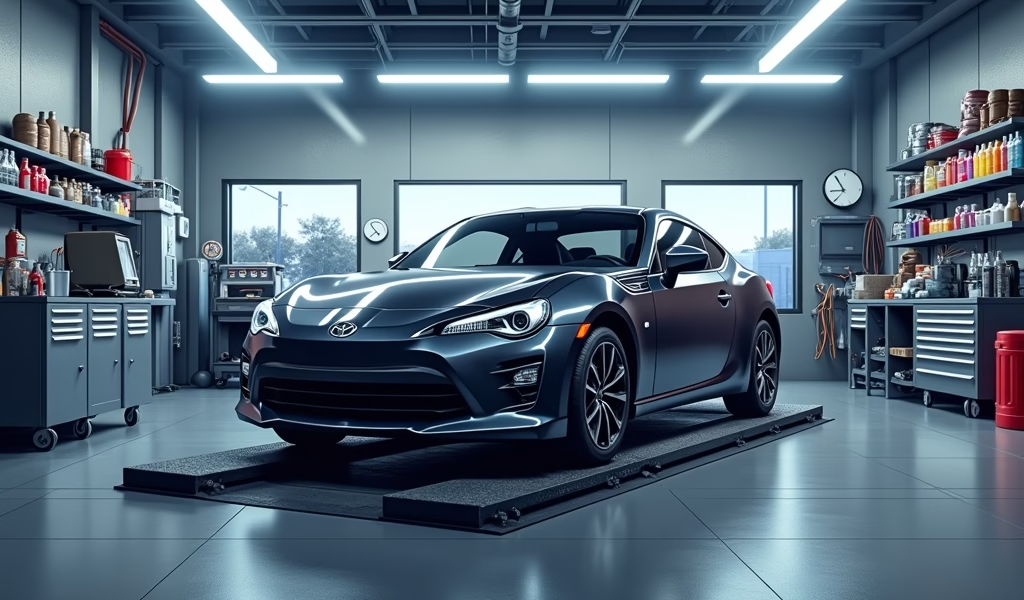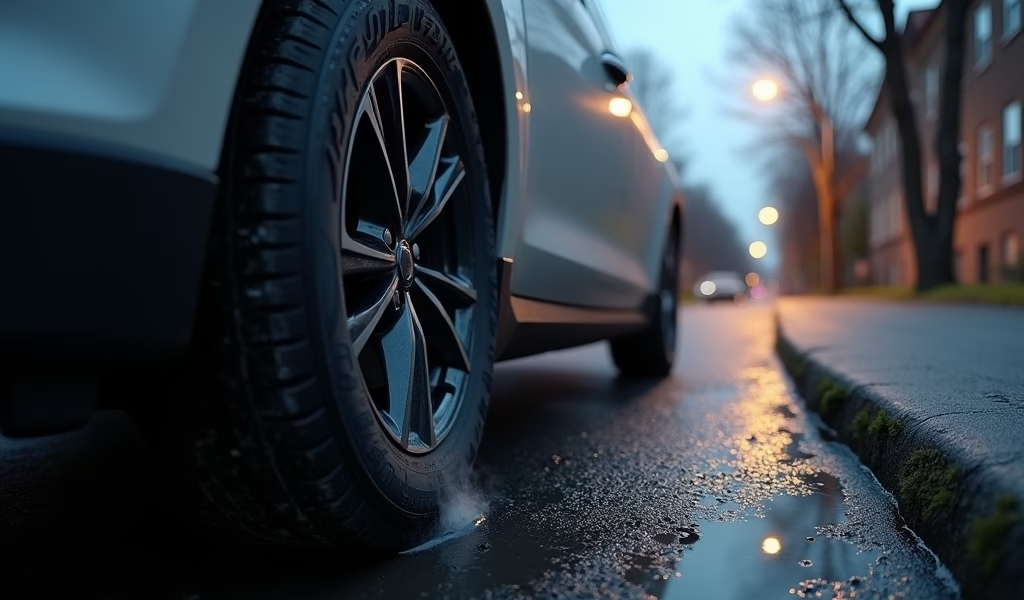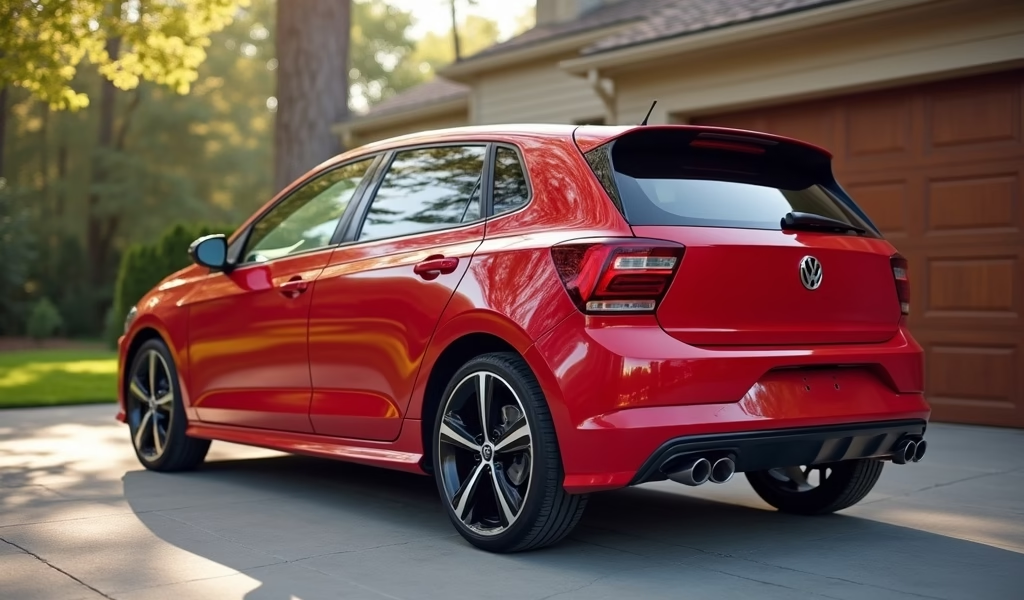Overview
The article explains how proper car maintenance can directly impact insurance premiums for young drivers, offering five essential maintenance tips: regular fluid checks, tire care, brake system maintenance, battery management, and keeping vehicles clean. By following these maintenance practices, young drivers can reduce accident risks from mechanical failures, potentially lowering their insurance costs while extending vehicle lifespan.
Table of Contents
- Understanding Young Driver Insurance
- Why Car Care Matters for Insurance
- Tip 1: Regular Fluid Checks
- Tip 2: Tire Maintenance
- Tip 3: Brake System Care
- Tip 4: Battery Management
- Tip 5: Keeping It Clean
- How Maintenance Affects Your Premium
- Conclusion
- Frequently Asked Questions
Understanding Young Driver Insurance
Let’s face it: getting car insurance as a young driver feels a bit like being charged extra for breathing. Insurance companies look at you – fresh-faced, perhaps with that new license smell still lingering – and see a walking risk assessment rather than a person. Statistics are not exactly on your side; young drivers account for a disproportionate number of accidents, a fact insurance companies cling to like my wrench clings to a stubborn bolt.
I’ve been fixing cars for over two decades, and I’ve seen everything from minor fender benders to “how did you even manage that?” catastrophes. One thing remains constant: many young driver accidents stem not just from inexperience behind the wheel, but from overlooking basic car maintenance. The good news? You have more control over your insurance rates than you might think.
Think of cheap car insurance for young drivers like finding a unicorn – rare but not impossible. With proper car care, you’re not just extending your vehicle’s life; you’re building a case for yourself as a responsible driver worthy of lower premiums. And who doesn’t want to keep more money for, well, literally anything other than insurance?
Why Car Care Matters for Insurance
Before we dive into the nitty-gritty, let’s connect the dots between that oil dipstick and your bank account. Insurance companies assess risk – it’s basically their love language. When you maintain your car properly, you significantly reduce the likelihood of accidents caused by mechanical failures. That blown tire because you never checked the pressure? The brakes that failed because the pads were worn down to atoms? These aren’t just maintenance issues; they’re potential claims waiting to happen.
According to statistics from the National Highway Traffic Safety Administration, vehicle malfunction contributes to thousands of accidents annually. For young drivers already facing steep premiums, these preventable incidents can send rates soaring faster than a V8 engine on an open highway.
Think about it this way: insurance companies offer discounts for safe driving habits, and proper maintenance is the unsung hero of safe driving. Some insurers even offer specific discounts for vehicles with advanced safety features or those that have passed comprehensive maintenance checks. It’s like getting a gold star, except the gold star is actual money back in your pocket.

Tip 1: Regular Fluid Checks
Cars run on fluids – and no, I don’t mean that energy drink you spilled in the cup holder last week. I’m talking about the five critical fluids that keep your car from transforming into an expensive paperweight: oil, coolant, brake fluid, power steering fluid, and windshield washer fluid.
Engine oil is the lifeblood of your vehicle. Think of it as sunscreen for your engine – without it, things heat up and get damaged fast. For young drivers with typically older, budget-friendly cars, regular oil changes are even more crucial. Follow your manufacturer’s recommendations, but generally aim for every 3,000-5,000 miles for conventional oil or 7,500-10,000 miles for synthetic.
Here’s a simple fluid check routine even the most mechanically challenged can master:
- Engine oil: Check monthly with the dipstick. Look for proper level and color (clean oil is amber; dark, gritty oil needs changing).
- Coolant: Check when the engine is COLD by looking at the reservoir. Never open a hot radiator unless you enjoy first-degree burns as a hobby.
- Brake fluid: The reservoir is typically transparent so you can check levels without opening it. If it’s below the “MIN” line, have it checked professionally – brake fluid doesn’t just “disappear.”
- Power steering fluid: Check with the engine running and steering wheel turned. Low levels cause that charming groaning noise when turning.
- Windshield washer fluid: Top it off regularly. This might seem trivial, but good visibility prevents accidents, especially for inexperienced drivers.
One client of mine, a college student named Jake, ignored his oil light for weeks. “It’s just a suggestion,” he told me, channeling his inner rebel. Two weeks later, he was back with an engine that sounded like a blender full of wrenches. The repair cost? More than his cheap insurance for young drivers premium for the entire year. Don’t be Jake.
Tip 2: Tire Maintenance
Your tires are literally where the rubber meets the road – the only parts of your car actually touching the ground. Yet they’re often the most neglected component, especially by young drivers who might view tire pressure as mysterious as quantum physics.
Proper tire maintenance isn’t just about avoiding flats; it directly impacts your vehicle’s handling, braking distance, and fuel efficiency. According to research from the NHTSA, vehicles with properly inflated tires can save up to 11 cents per gallon on fuel. For a young driver on a budget, that adds up faster than student loan interest.
Here’s your tire maintenance checklist:
- Check pressure monthly and before long trips. The correct PSI is found on the driver’s door jamb sticker, NOT on the tire itself.
- Inspect tread depth regularly using the penny test: insert a penny with Lincoln’s head upside down into the tread groove. If you can see all of Lincoln’s head, your treads are worn and need replacement.
- Look for uneven wear patterns, which indicate alignment issues that can affect handling and safety.
- Rotate tires every 5,000-7,500 miles to ensure even wear and extended tire life.
- Don’t forget the spare! Check its pressure too – there’s nothing more useless than a flat spare when you need it.
I once had a young customer who came in after hitting a curb, insisting her steering was fine despite the car pulling dramatically to the right. “I just compensate by turning the wheel left,” she explained, as if she’d invented a brilliant workaround. This DIY solution had worn her tires unevenly and created a genuine safety hazard. Remember: your car shouldn’t require creative steering techniques to drive straight.
Tip 3: Brake System Care
If there’s one system in your car you absolutely don’t want to fail, it’s your brakes. They’re kind of important – like oxygen-is-to-breathing important. For young drivers who might occasionally find themselves in need of sudden stops (we’ve all been there with that text message that just had to be read), brake maintenance isn’t optional.
Brake issues often announce themselves with all the subtlety of a game show host. Listen for these warning signs:
- Squealing or grinding noises (think nails on a chalkboard, but more expensive)
- Vibration or pulsation when braking
- Longer stopping distances than usual
- The brake pedal feels “spongy” or goes too far toward the floor
- The car pulls to one side when braking
Don’t ignore these signals! They’re your car’s way of saying “Hey, I’d really like to be able to stop next time you need me to.” Regular brake inspections should happen during oil changes, and brake fluid should be checked monthly along with your other fluids.
I remember a young driver who came in complaining that his car was “kind of loud when slowing down.” The “kind of loud” turned out to be metal-on-metal grinding because his brake pads had completely worn away. He’d been driving on his rotors for weeks. The repair cost? Four times what preventative maintenance would have cost. The risk to his safety and others? Immeasurable.

Tip 4: Battery Management
Car batteries are the introverts of automotive components – they quietly do their job until one day, usually when you’re already late, they decide they’ve had enough social interaction for the day. For young drivers, a dead battery often means a panicked call to parents or roadside assistance, neither of which enhances your image as a responsible motorist.
The average car battery lasts about 3-5 years, but proper management can extend this lifespan. Here’s how to keep your battery happy and your car starting reliably:
- Keep battery terminals clean. Corrosion looks like a science experiment gone wrong – white, powdery buildup that restricts electrical connection.
- Make sure the battery is securely mounted. Vibration is a battery’s enemy.
- Turn off lights and accessories when shutting down your car. Nothing drains a battery like forgetting the dome light is on overnight.
- Drive your car regularly. Short trips don’t allow the alternator sufficient time to recharge the battery.
- Consider a battery tender for vehicles that sit unused for extended periods (like during college breaks).
One rookie mistake I see constantly: jumping a car incorrectly. The resulting electrical surge can fry your car’s sensitive electronics faster than lightning. If you’re unsure about proper jump-starting procedure, ask someone who knows or call professionals. Your car’s computer will thank you by not needing a $1,000+ replacement.
Battery testing is often free at auto parts stores, so there’s no excuse for being caught unaware by a failing battery. Most batteries give warning signs before complete failure – sluggish starting, dimming lights, or electronic glitches. Consider these your battery’s version of a “check engine” light.
Tip 5: Keeping It Clean
You might think keeping your car clean is purely cosmetic – like making your bed or wearing matching socks. But regular cleaning is actually preventative maintenance in disguise. It’s like dental flossing, but for your car (and considerably less tedious).
External washing does more than make your car look like it belongs to a responsible adult. It removes corrosive substances like road salt, tree sap, and bird droppings that can damage paint and eventually lead to rust. In winter climates especially, undercarriage washing is crucial to prevent salt-related corrosion.
Interior cleaning isn’t just about impressing your date. Dirt and debris can damage upholstery and carpeting, while spilled liquids can affect electrical components. Plus, a clean car typically has fewer distractions – important for young drivers still mastering the road.
Here’s a simple maintenance cleaning schedule:
- Weekly: Quick interior tidy-up, removing trash and wiping surfaces
- Monthly: Thorough exterior wash including undercarriage
- Quarterly: Deep clean interior including vacuuming, upholstery cleaning, and dashboard conditioning
- Semi-annually: Waxing to protect paint and clear coat
The “check engine” light is not the car equivalent of that weird noise your refrigerator makes that you’ve been ignoring for months. When warning lights appear, addressing them promptly prevents minor issues from becoming major repairs. Many auto parts stores will scan your car for free to identify the specific issue.
How Maintenance Affects Your Premium
Now let’s talk money – specifically, how all this maintenance connects to those premiums that make your wallet weep. Insurance companies don’t directly monitor your maintenance habits (they’re not installing spy cameras in your garage… yet). However, they do track the outcomes of poor maintenance: claims.
Here’s the financial logic: Regular maintenance reduces the likelihood of accidents caused by mechanical failures. Fewer accidents mean fewer claims. Fewer claims mean lower premiums over time. It’s as straightforward as that classic cause-and-effect diagram from high school science class.
Some insurance companies offer usage-based insurance programs that monitor driving habits through a device plugged into your car or an app on your phone. These programs don’t typically track maintenance directly, but they do monitor things like hard braking and acceleration – both of which can be affected by the condition of your vehicle.
Keep thorough maintenance records. They’re valuable when:
- Selling your car (maintenance records can increase resale value by up to 10%)
- Disputing a warranty claim (proof you’ve followed required maintenance)
- Demonstrating responsible ownership to your insurance company if you’re seeking rate reductions
Think of maintenance as an investment with multiple returns: lower repair costs, improved safety, better fuel efficiency, higher resale value, and potentially lower insurance premiums. That oil change doesn’t seem so optional anymore, does it?
Conclusion
The relationship between car maintenance and young driver insurance isn’t just mechanic mumbo-jumbo – it’s dollars and sense. By taking care of those fluid checks, keeping your tires properly inflated, maintaining your brakes, managing your battery, and keeping your car clean, you’re not just extending your vehicle’s life. You’re building a safety net that protects both your physical wellbeing and your financial future.
Remember: insurance companies aren’t in the business of charging you more because they enjoy it (though sometimes it feels that way). They’re assessing risk. The more you do to reduce your risk profile, the better position you’ll be in to negotiate lower premiums as time goes on.
So the next time you’re tempted to ignore that strange noise or postpone that oil change, remember that you’re not just risking mechanical issues – you’re potentially paying for it twice: once for the repair and again through your insurance premium. Take it from someone who’s seen thousands of preventable car disasters: an ounce of maintenance is worth a pound of insurance premiums.
Now go check your oil. Your car and your wallet will thank you.
Frequently Asked Questions
How much more expensive is insurance for young drivers compared to experienced drivers?
Young drivers typically pay 2-3 times more than experienced drivers for the same coverage. This gap gradually decreases as you build a clean driving record over time.
Does the type of car affect insurance rates for young drivers?
Absolutely – sports cars and high-performance vehicles can drastically increase premiums for young drivers. Opt for vehicles with strong safety ratings and modest engines for the most affordable rates.
Can taking a defensive driving course lower my insurance as a young driver?
Yes, most insurance companies offer discounts of 5-15% for young drivers who complete approved defensive driving courses. These courses demonstrate your commitment to safe driving practices.
How long am I considered a “young driver” for insurance purposes?
Most insurance companies consider drivers under 25 to be in the “young driver” category. However, rates typically begin to decrease significantly after age 21 with a clean driving record.
Will installing a tracking device really lower my insurance premium?
Usage-based insurance programs can reduce premiums by 10-30% for young drivers who demonstrate safe driving habits. These programs track factors like speed, braking patterns, and time of day you drive.

